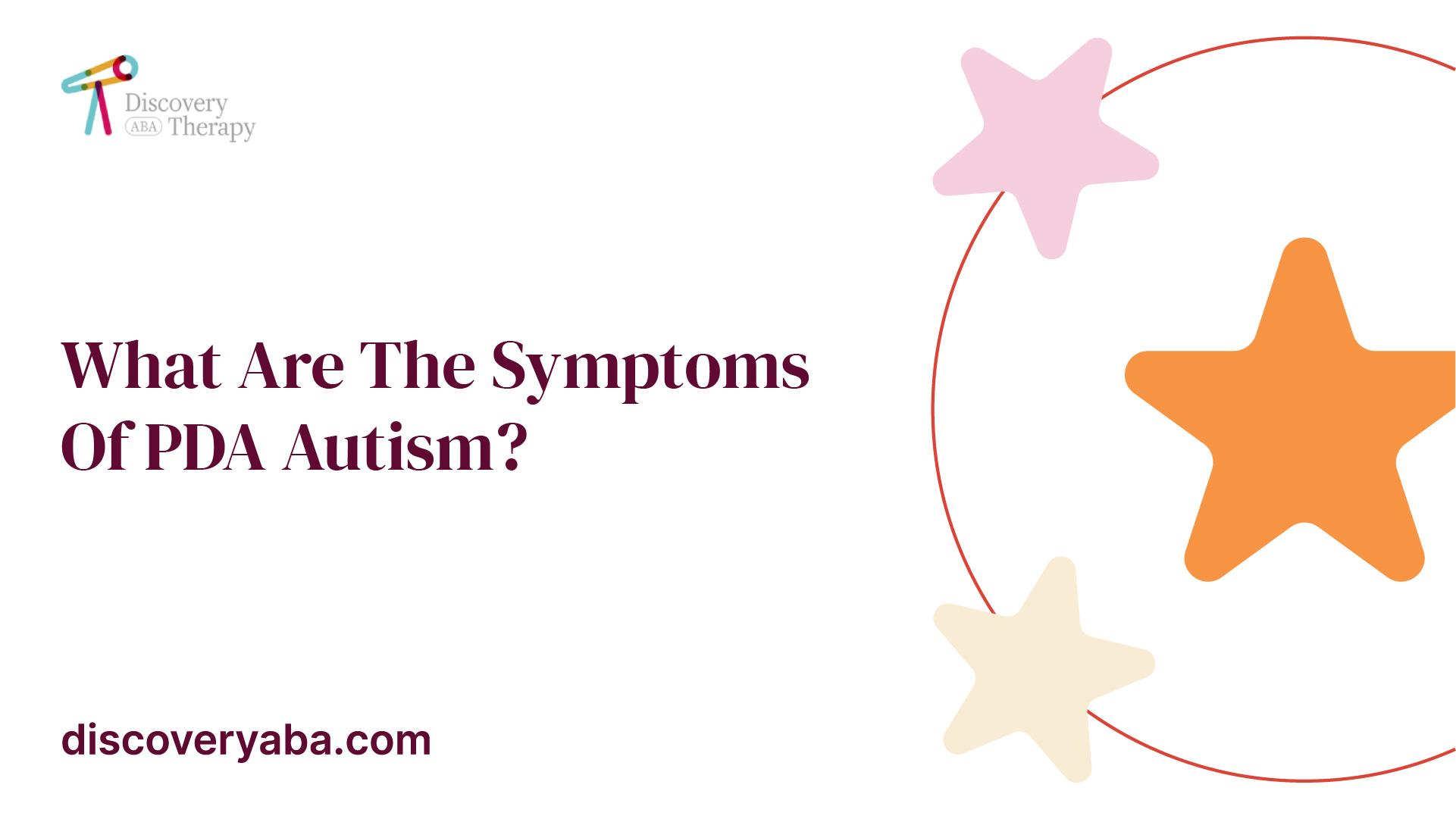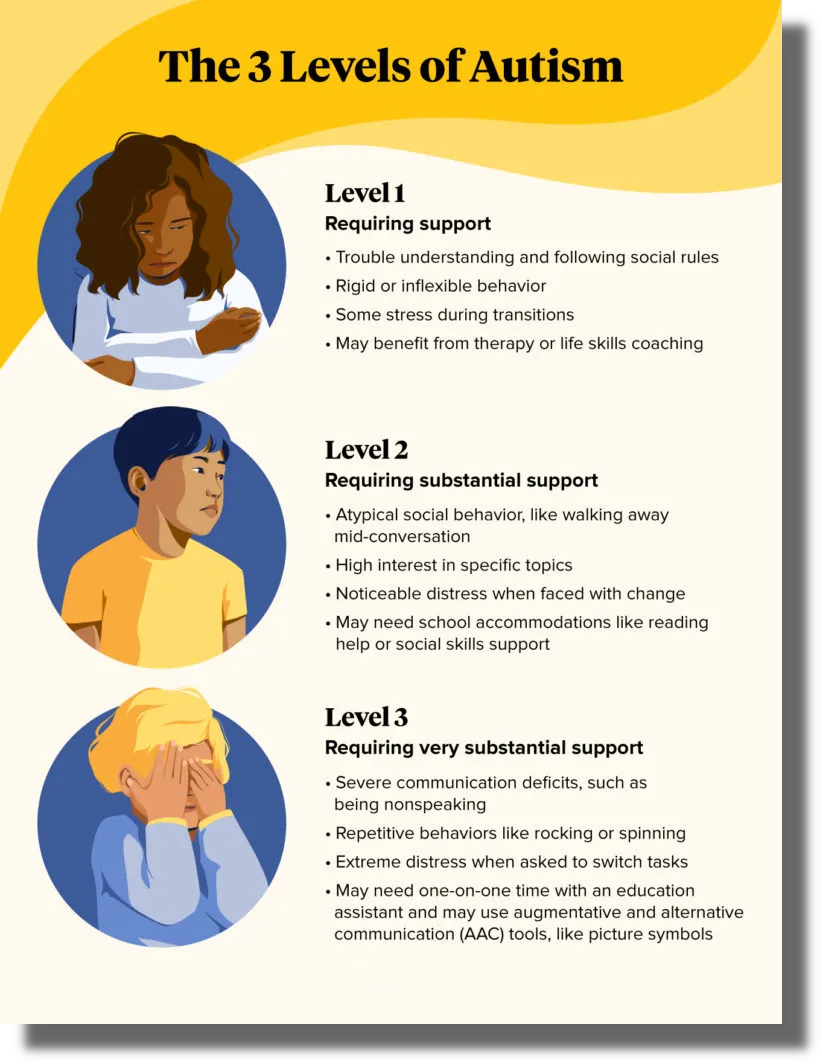How to build real connections with help from an Autism Therapist's insights
How to build real connections with help from an Autism Therapist's insights
Blog Article
Comprehending the Impact of Behavioral Autism on Every Day Life and Social Communications
You might not realize how deeply behavioral autism influences day-to-day live and social interactions. Individuals on the spectrum frequently browse a world filled with communication obstacles and sensory overload. These obstacles can bring about aggravation and seclusion, affecting their partnerships and overall well-being. Comprehending these nuances is important for fostering encouraging environments. What methods can we execute to develop even more meaningful links and comprehensive areas? The answers might shock you.
Specifying Behavioral Autism and Its Attributes
Behavior autism, commonly described as autism spectrum disorder (ASD), incorporates a variety of problems identified by difficulties in social communication, communication, and recurring habits. You could observe that people with ASD usually struggle to analyze social cues, which can bring about misconceptions in discussions. They may locate it difficult to establish eye contact or take part in small talk, making social situations feel overwhelming.
Interaction problems can show up in numerous means, from postponed speech advancement to a preference for using fewer words. By acknowledging these attributes, you can foster an environment that promotes acceptance and motivates efficient communication, aiding people with autism grow in their everyday communications.
The Range of Autism: Comprehending Variability in Behavior
Autism range problem (ASD) isn't a one-size-fits-all medical diagnosis; it varies commonly among individuals. You may experience individuals who are highly verbal and engage conveniently in discussions, while others could choose solitary tasks or communicate non-verbally.
Furthermore, the way individuals with ASD reply to sensory input can vary considerably; some could be bewildered by loud sounds or intense lights, whereas others flourish in stimulating atmospheres. The range likewise includes distinctions in social communications; some people may have a hard time to translate social cues, while others navigate social settings with relative simplicity. Understanding this variability is vital, as it assists you value each person's special experience and dressmaker support to their specific requirements, fostering a more inclusive atmosphere for everyone.
Communication Difficulties Encountered by Individuals With Autism
When you engage with people on the autism spectrum, you may observe their unique communication obstacles. They often deal with difficulties with both nonverbal and verbal signs, which can impact their social interactions. Understanding these barriers is important for fostering better connections and assistance.

Verbal Communication Problems
Lots of individuals on the autism spectrum experience spoken interaction difficulties that can substantially influence their day-to-day interactions. You could discover it challenging to reveal your ideas, feelings, or needs plainly. This can cause aggravation for both you and those around you, as misconceptions happen. You may battle with starting conversations, maintaining a topic, or recognizing nuances in speech. Usually, you could like using straightforward language or recurring phrases, which can limit your ability to participate in much deeper conversations. Your tone, quantity, or speed could not line up with social assumptions, creating others to misunderstand your objectives. Acknowledging these difficulties can assist you and your support network develop strategies to boost communication and cultivate much better links with others in your everyday life.
Nonverbal Communication Obstacles
Spoken communication isn't the only difficulty people on the autism range face; nonverbal communication obstacles can be simply as significant. You may locate it challenging to translate body movement, faces, and eye get in touch with, which are vital for efficient communication. These difficulties can cause misunderstandings or misconceptions of social cues, making interactions really feel complicated or frustrating. You might battle to share your very own feelings with nonverbal means, leaving others unsure of your intentions or sensations. This disconnect can develop feelings of isolation and frustration. Acknowledging these barriers is vital for fostering understanding and empathy in your interactions. By attending to nonverbal communication, you can discover approaches to enhance your social experiences and improve your overall high quality of life.
Social Interaction Influences
Social communications can often really feel frustrating due to the distinct communication difficulties dealt with by individuals with autism. Acknowledging these obstacles can assist you discover strategies to enhance interaction, such as exercising social abilities in risk-free settings or making use of aesthetic aids. Comprehending your demands allows you to navigate social communications with greater confidence and simplicity.
Social Interaction and Partnership Structure in Autism
While structure connections can be challenging for individuals with autism, recognizing their one-of-a-kind viewpoints and interaction designs can foster purposeful links. You might observe that lots of people on the spectrum like straight interaction and might have problem with social signs or tiny talk. By being simple in your communications, you can help create an environment where they really feel comfy.
Put in the time to observe and listen how they reveal themselves. This insight can lead you in steering discussions a lot more successfully. Taking part in shared passions can additionally work as a bridge to much deeper links. Whether it's a hobby, a preferred show, get more info or a shared enthusiasm, these typical strings can open doors to relationship.
Every Day Life Routine: Browsing Difficulties and Methods
Maneuvering daily life regimens can be specifically challenging for individuals with autism, especially when unexpected adjustments take place. To browse these difficulties, think about carrying out visual timetables or lists.
Establishing a routine that consists of sensory breaks can also be helpful. You can plan brief breaks throughout your day to reenergize. It's important to communicate with those around you, allowing them know your requirements and choices. This aids develop an understanding atmosphere.
Finally, practice mindfulness methods to manage anxiety and stress and anxiety. Simple breathing workouts or grounding techniques can make a significant distinction. By incorporating these approaches, you can improve your everyday routine and reduce disturbances, making life really feel more convenient.
Staminas and Capacities of Individuals on the Autism Range
Recognizing daily life regimens is simply one aspect of the autism experience. Numerous people on the autism range have remarkable staminas and abilities that set them apart.
In addition, your memory abilities typically beam, especially in areas of rate of interest. Aba Therapist Near Me. This knack for keeping info can make you a beneficial source in areas like art, innovation, or scientific research. You may likewise display strong visual thinking, enabling you to picture intricate principles and solve issues creatively
Additionally, your distinct point of view on the world can cultivate compassion and understanding in others, improving social communications. Accepting these staminas not only increases your confidence however also assists others appreciate the diverse abilities you bring to the table.
Creating Comprehensive Settings for People With Autism
Producing comprehensive environments for individuals with autism starts with designing sensory-friendly spaces that accommodate their unique demands. You can likewise promote opportunities for social interaction, helping to develop relationships and connections. By making these adjustments, you'll add to a more inviting environment for every person.
Designing Sensory-Friendly Spaces
While designing sensory-friendly rooms, it's vital to mirror on the special demands of individuals with autism. Start by picking calming colors and soft illumination to develop a comforting environment. Integrate quiet get more info areas where individuals can charge and pull back when overwhelmed. You'll desire to reduce loud noises and interruptions, making use of soundproof materials or white sound machines to assist maintain serenity. Take into consideration responsive aspects like soft textiles or fidget-friendly items that can provide convenience. Determine that rooms are flexible, enabling very easy reformation to accommodate different tasks. Include visual routines or clear signs to aid individuals navigate the space confidently. By thoughtfully integrating these components, you can produce a welcoming ambience that supports sensory needs and promotes general wellness.
Advertising Social Communication Opportunities
Creating sensory-friendly areas not just addresses specific convenience yet additionally sets the stage for significant social interactions among people with autism. To advertise these communications, develop comprehensive atmospheres that welcome engagement. Arrange structured activities, like art classes or team video games, that encourage collaboration without overwhelming sensory input. Use visual help and clear interaction to assist every person involve pleasantly. Motivate peer mentoring, combining people with autism with encouraging peers that can direct them through social circumstances. In addition, take into consideration organizing routine neighborhood events that commemorate neurodiversity, promoting acceptance and understanding among all individuals. By carrying out these approaches, you can boost social possibilities, aiding people with autism build relationships and reinforce their social skills in a risk-free, welcoming setting.

Often Asked Questions
Exactly How Can Pals Support A Person With Behavioral Autism?
You can support a pal with behavior autism by holding your horses, listening proactively, and respecting their limits. Participate in activities they delight in, interact freely, get more info and create a comfy environment where they feel valued and recognized.
What Resources Are Offered for Moms And Dads of Kid With Autism?
You can discover various resources for parents of kids with autism, consisting of support groups, academic sites, and regional social work. Attaching with various other moms and dads can likewise supply beneficial understandings and shared experiences to aid browse challenges.
Can Behavioral Autism Change Over Time?

Yes, behavior autism can alter with time. You might discover changes in communication, social skills, and behavior as your youngster expands. Early intervention and assistance often play vital duties in these developing changes.
Just How Do Sensory Level Of Sensitivities Impact Every Day Life?
Sensory level of sensitivities can make day-to-day experiences frustrating. You might have a hard time with brilliant lights or loud noises, leading to tension or evasion. Discovering environments that suit your requirements can significantly boost your convenience and overall day-to-day live.
What Are Typical Misconceptions About Behavioral Autism?
You could think behavior autism just impacts communication abilities, yet it's more complicated. Many assume individuals lack compassion or intelligence, which isn't real. Understanding these misconceptions helps foster acceptance and assistance for those on the range.
Behavioral autism, often referred to as autism spectrum problem (ASD), incorporates a variety of conditions defined by difficulties in social interaction, communication, and repeated habits.Social interactions can commonly really feel frustrating due to the one-of-a-kind communication obstacles encountered by people with autism.Designing sensory-friendly areas not only addresses individual comfort however additionally sets the phase for purposeful social interactions amongst individuals with autism. Encourage peer mentoring, matching individuals with autism with encouraging peers that can guide them through social circumstances. By implementing these methods, you can enhance social chances, assisting people with autism construct friendships and strengthen their social skills in a risk-free, inviting setting.
Report this page